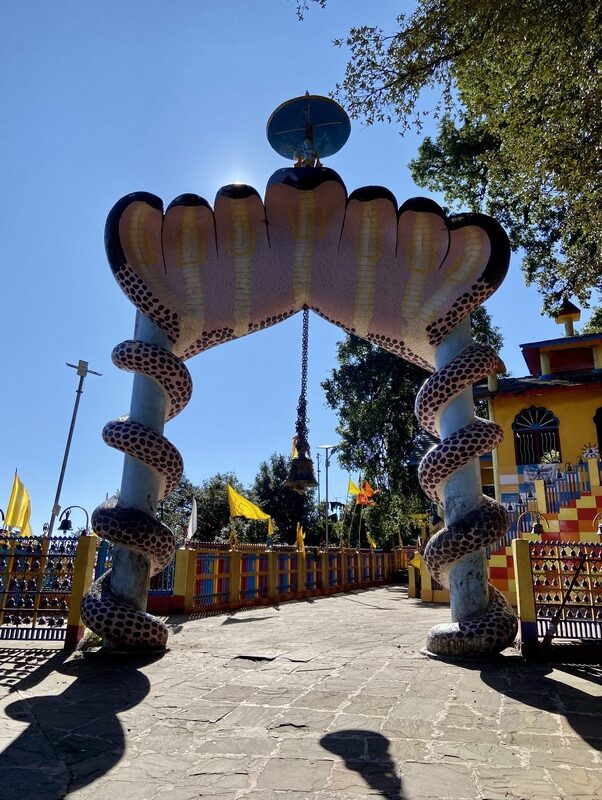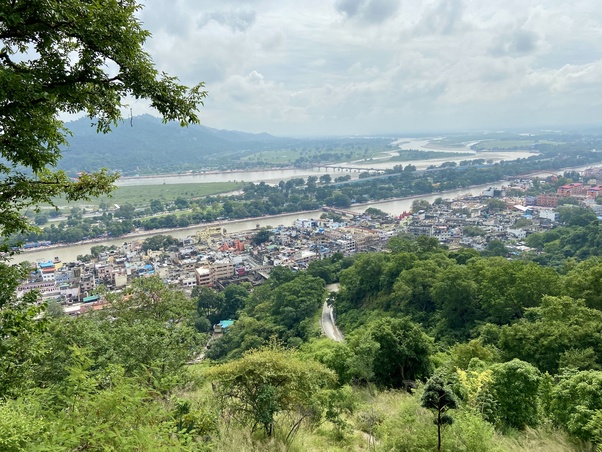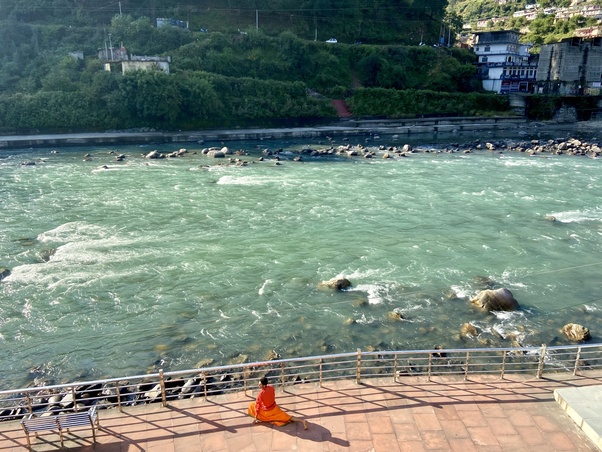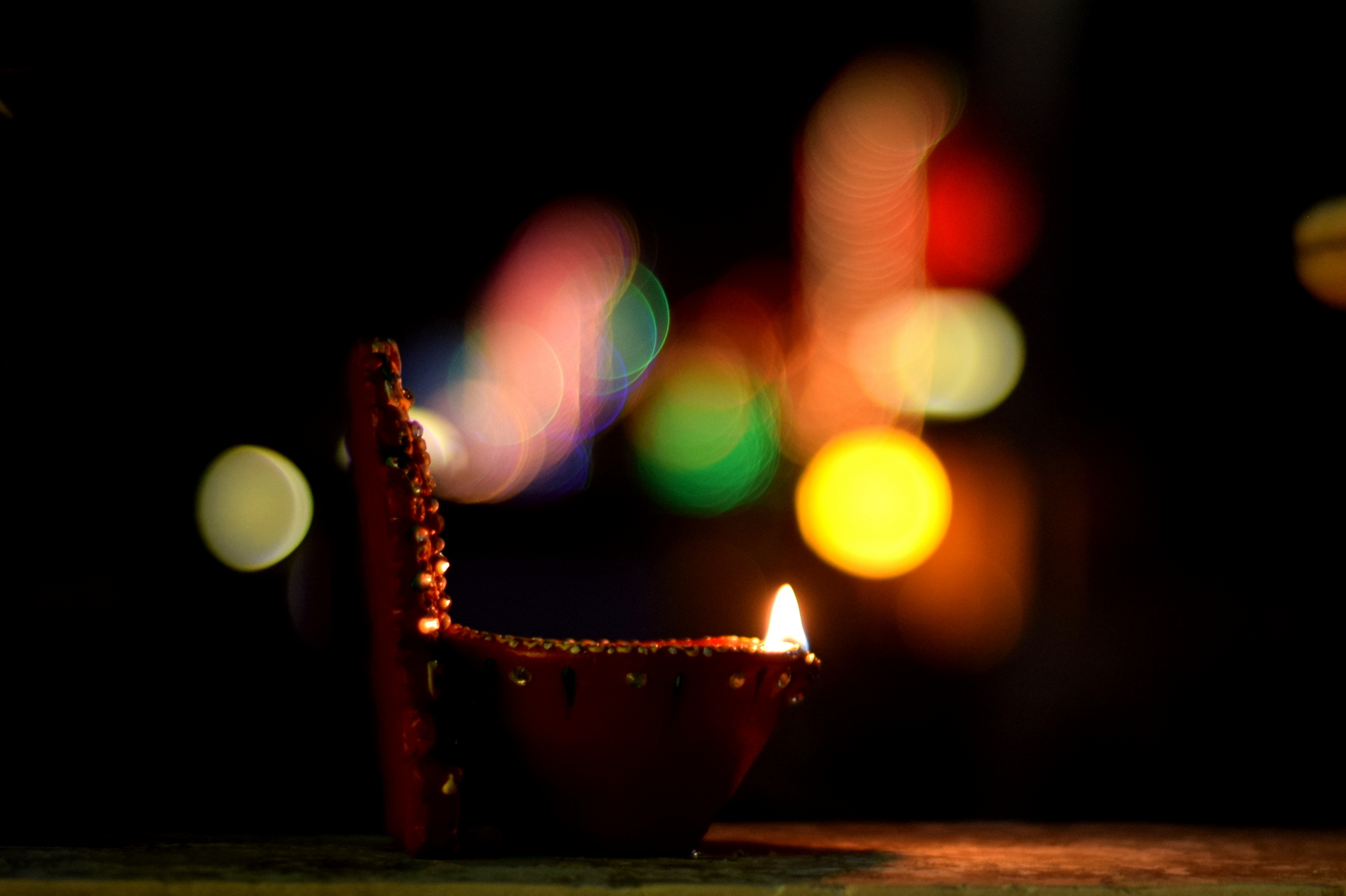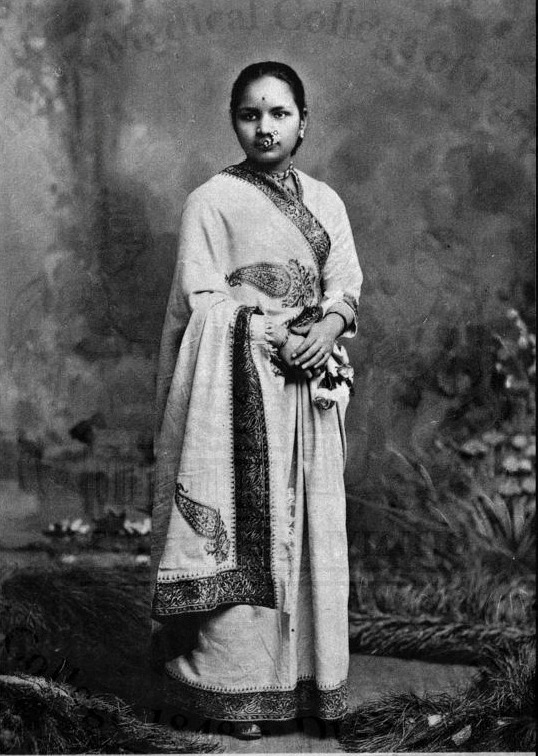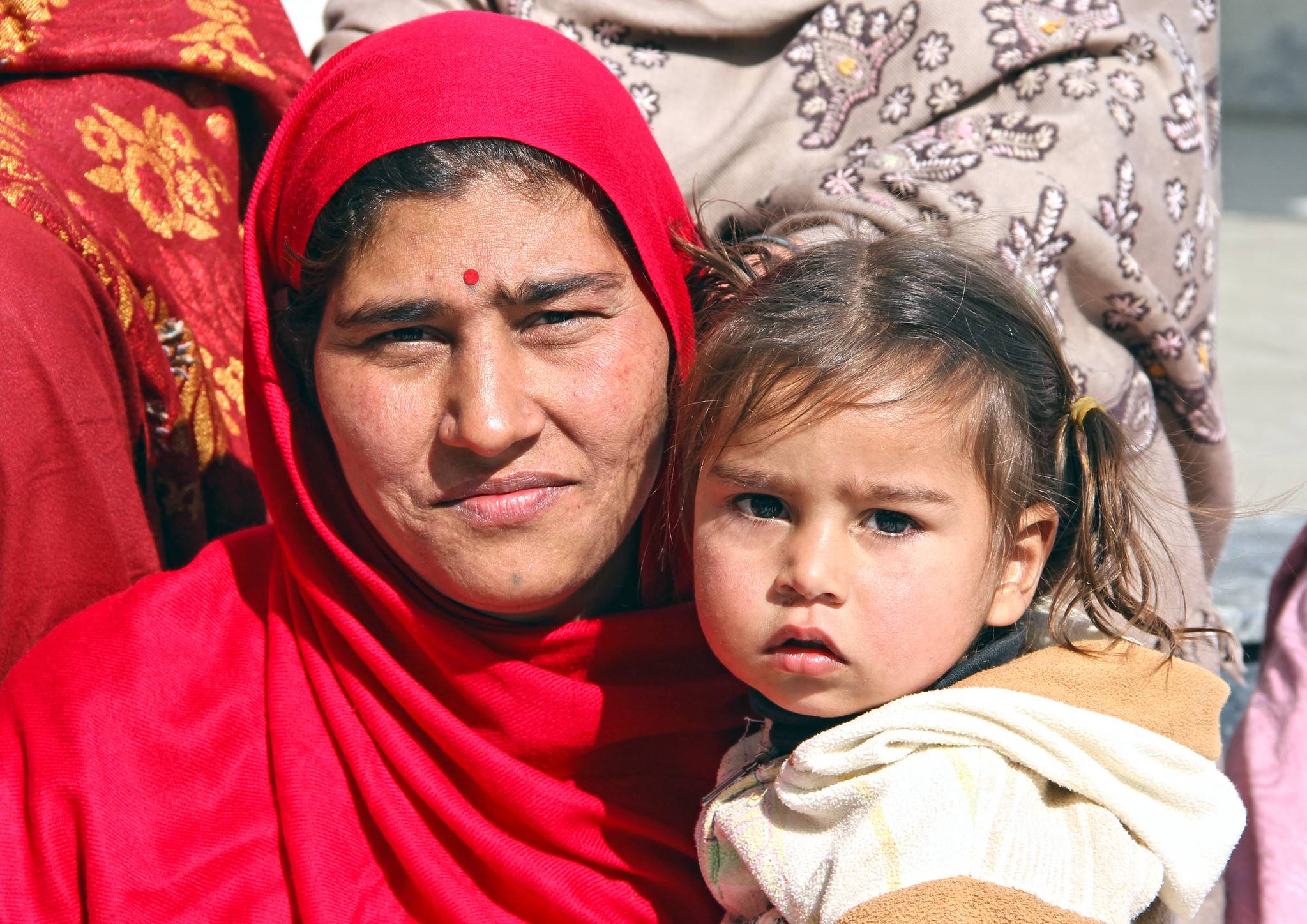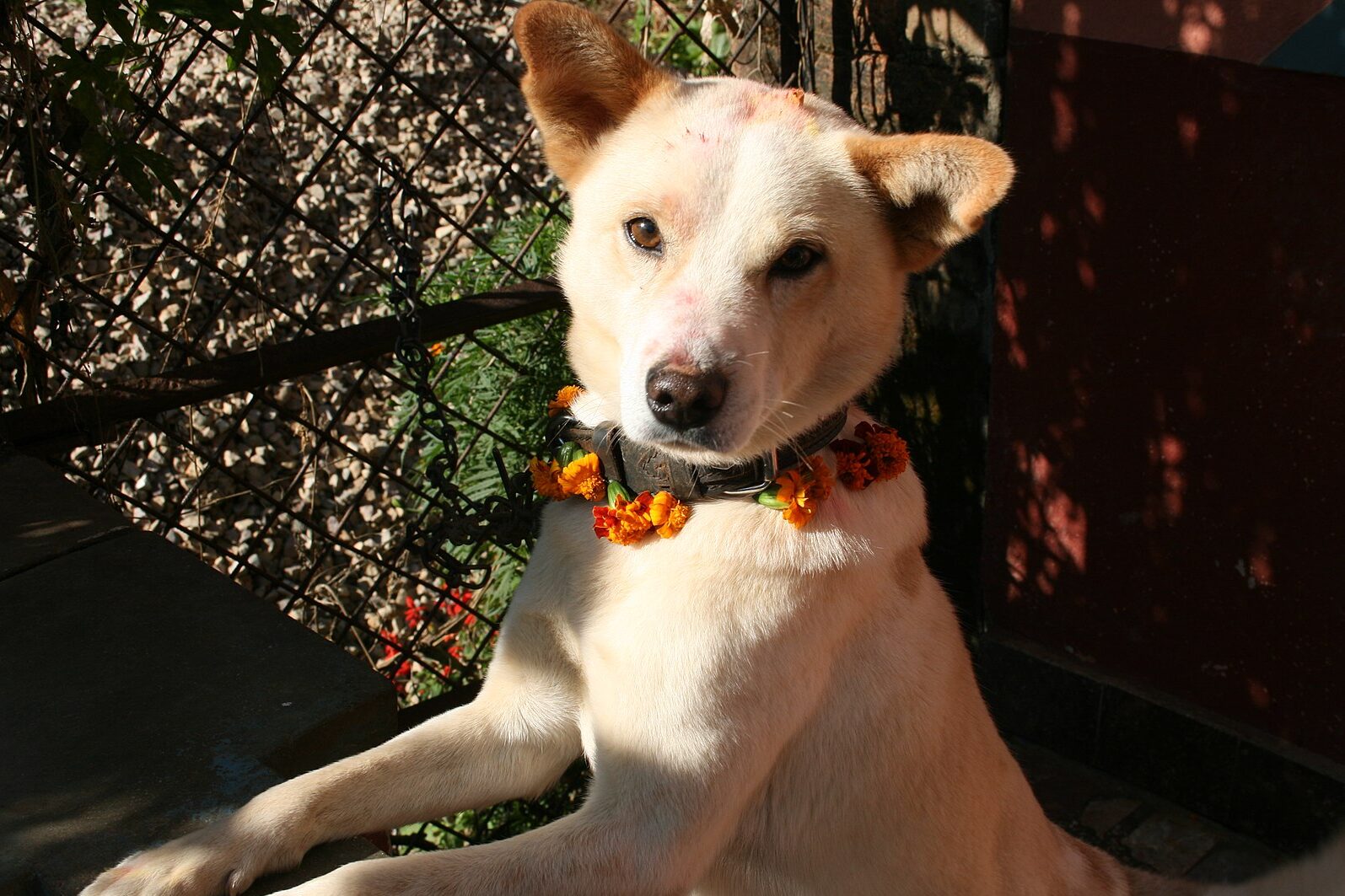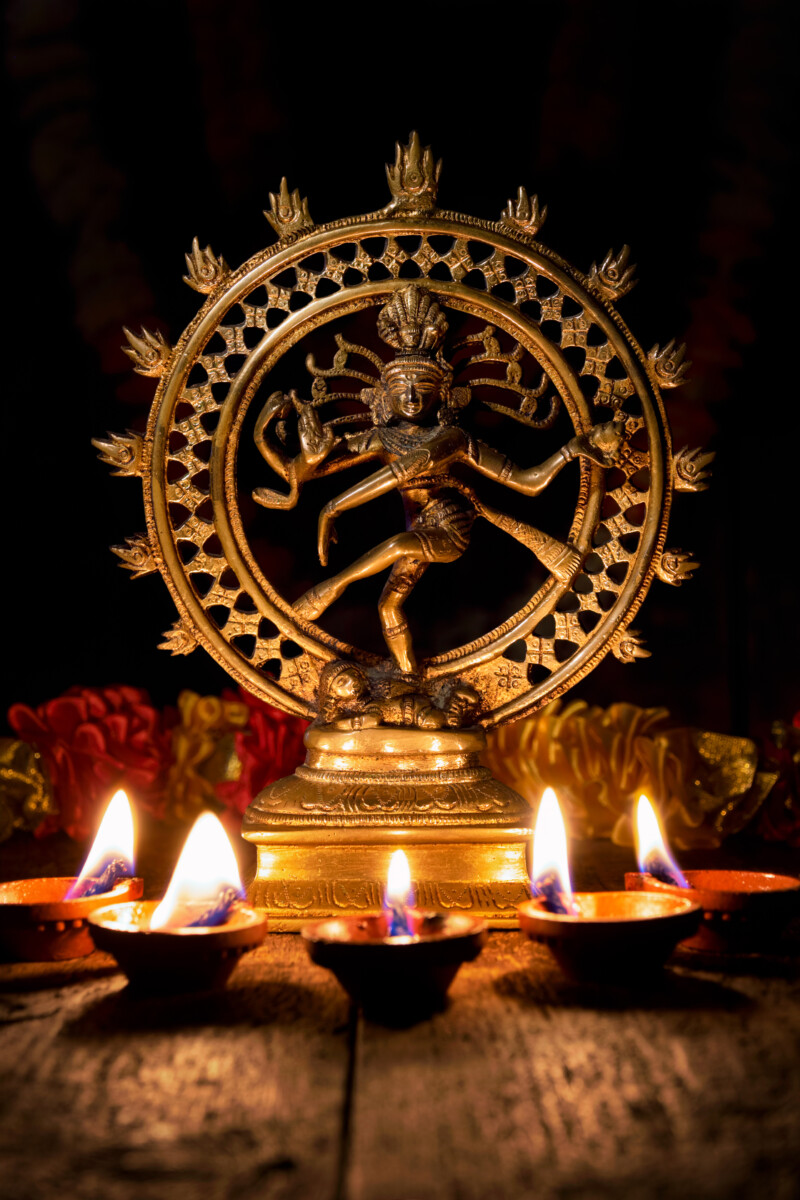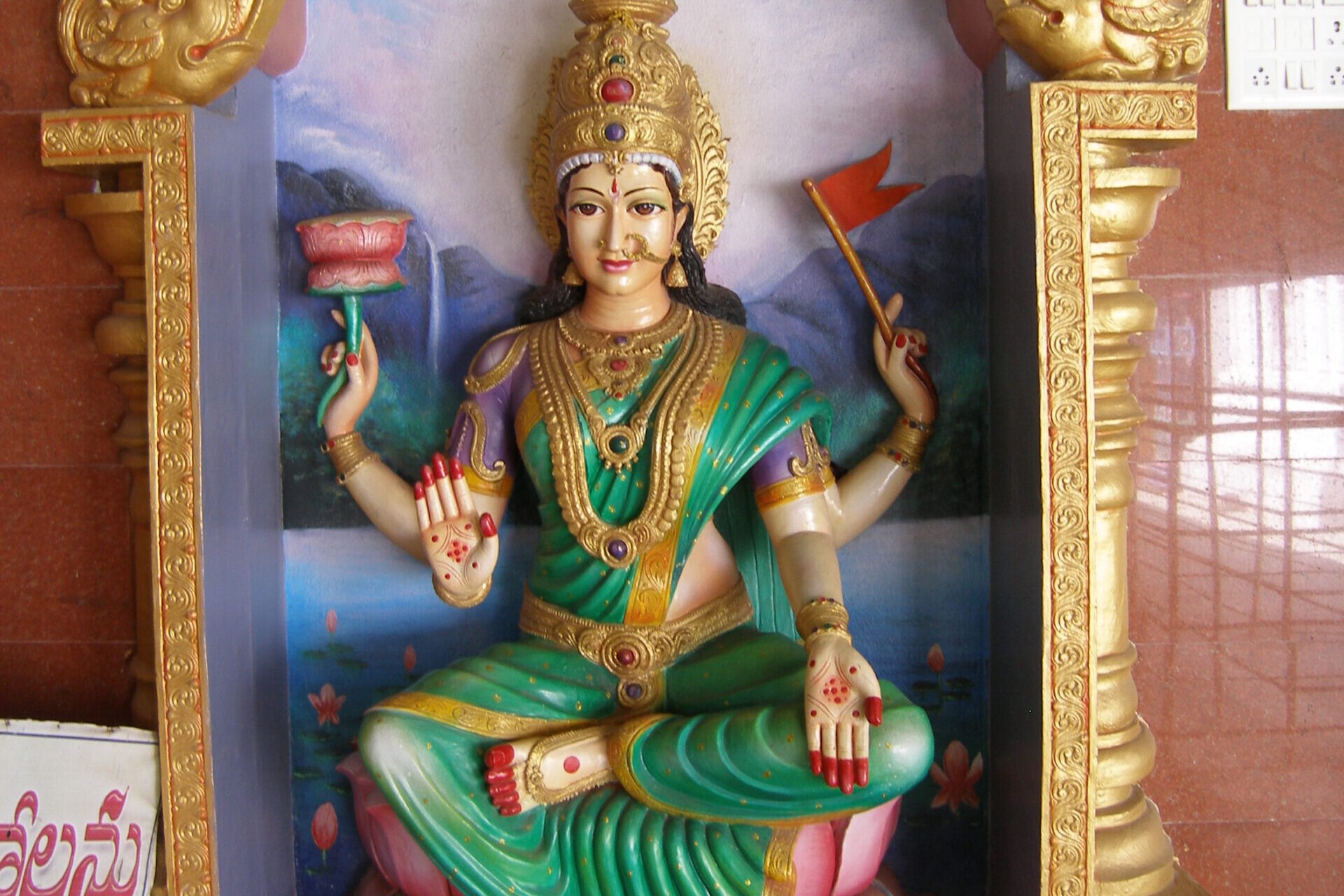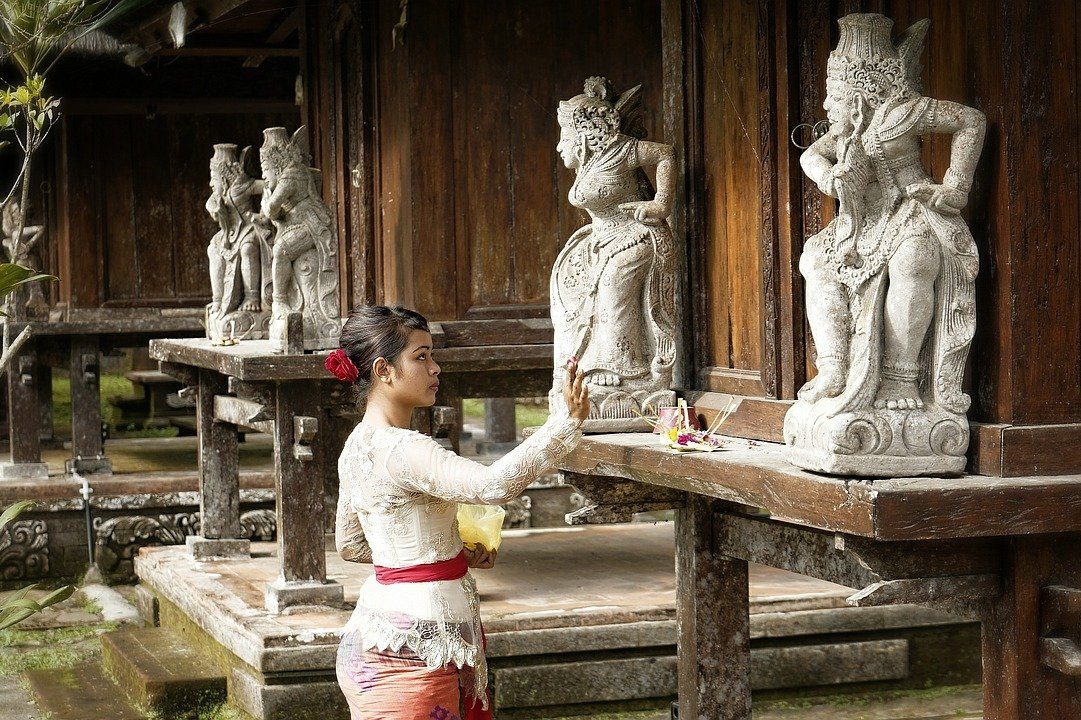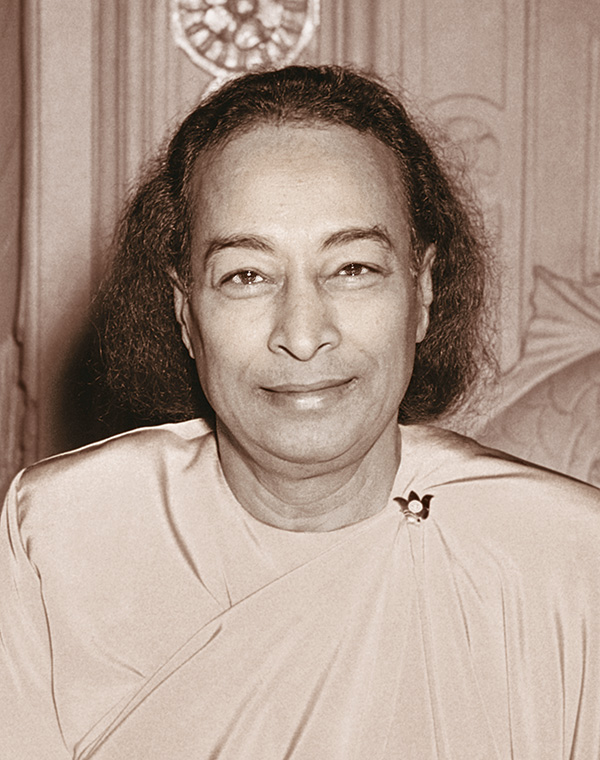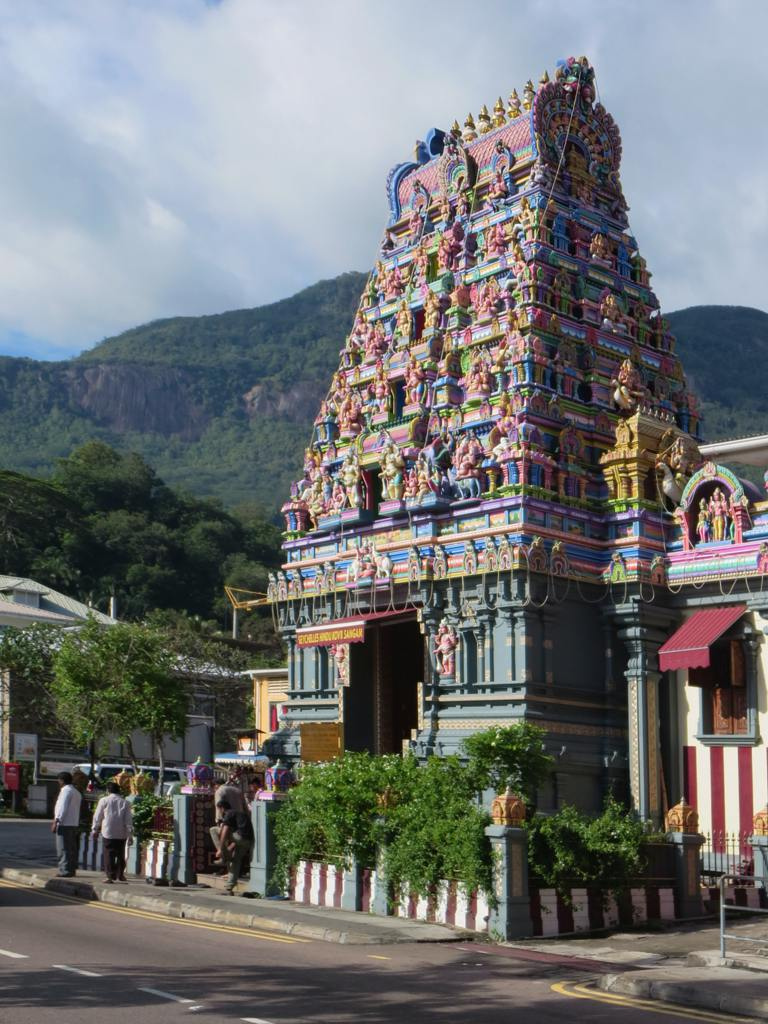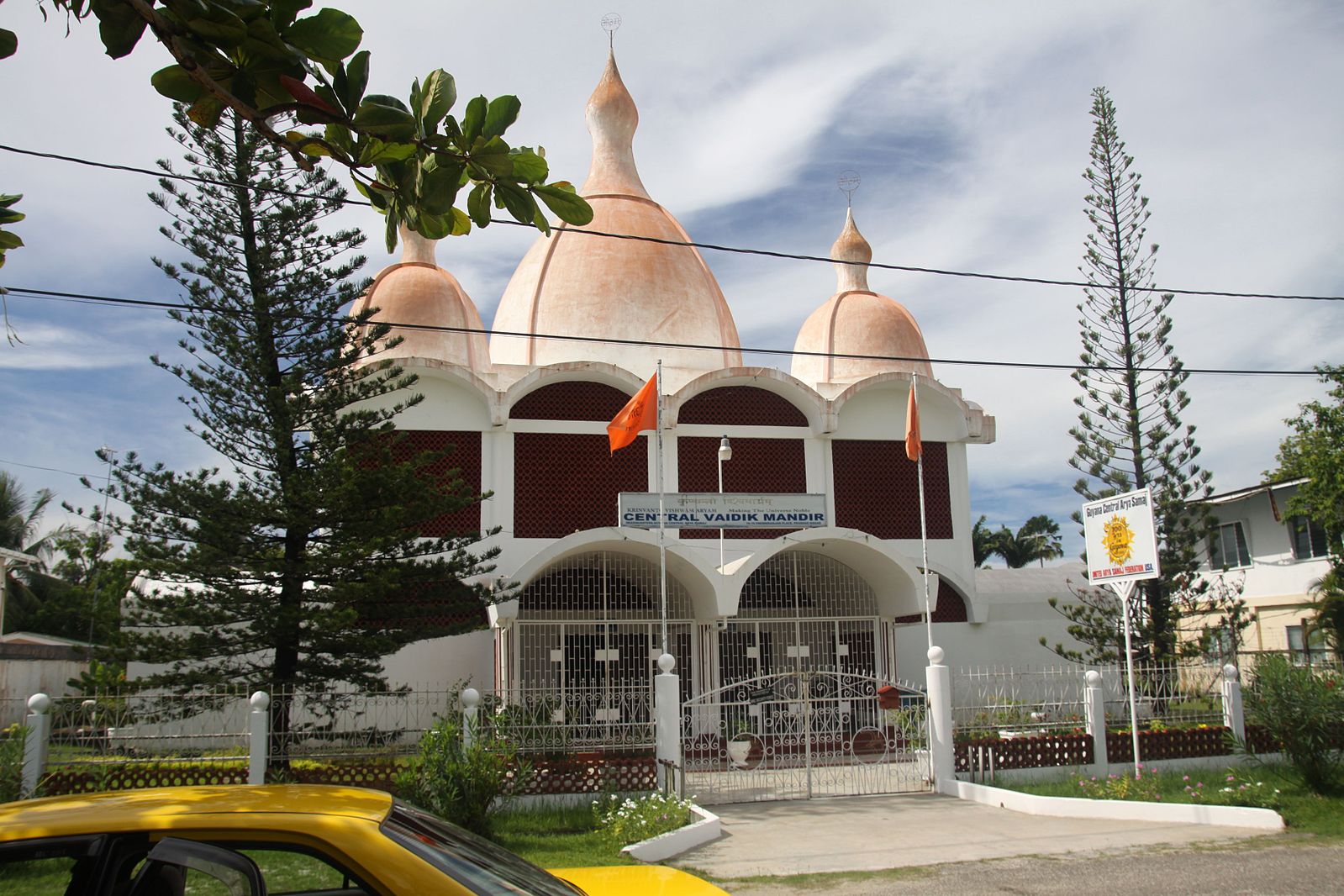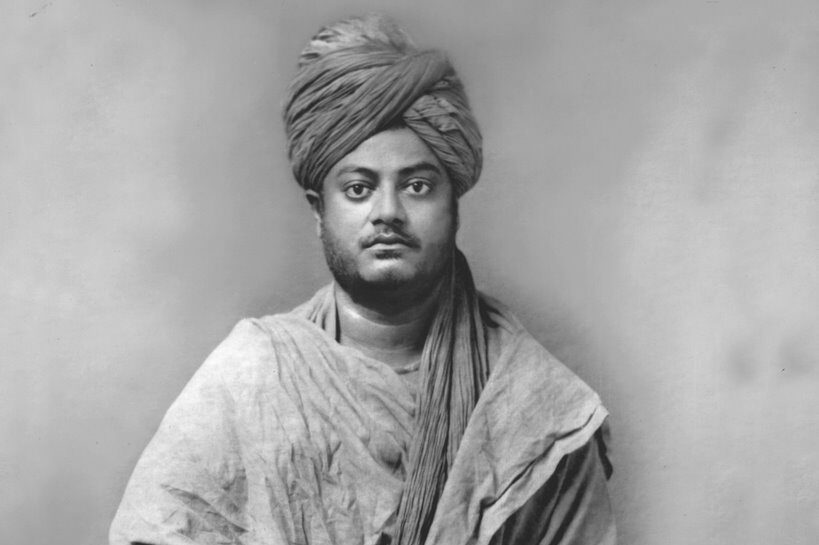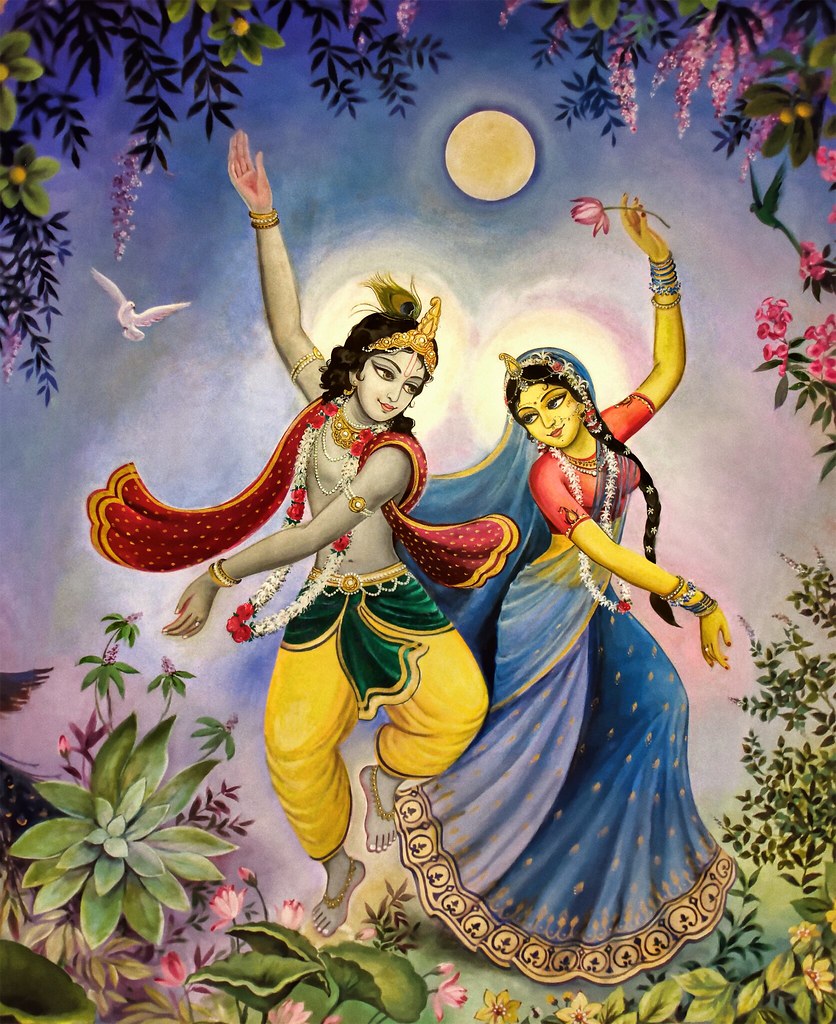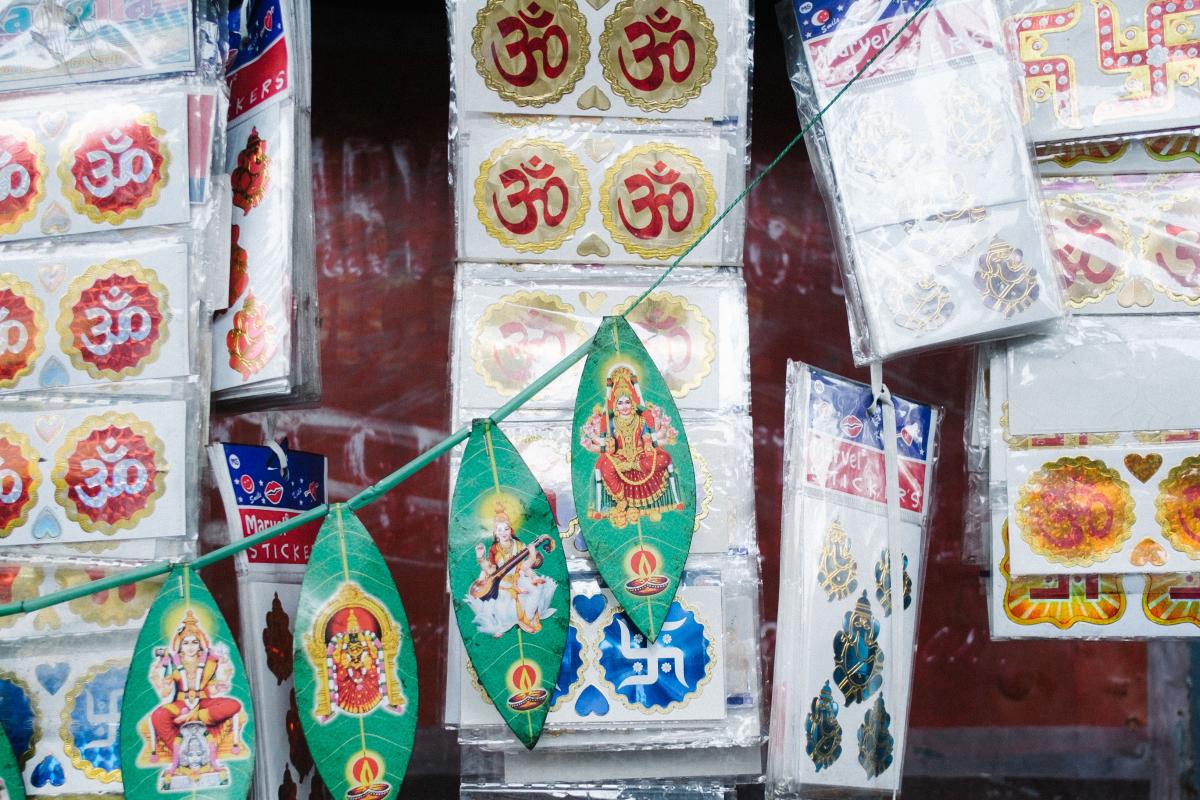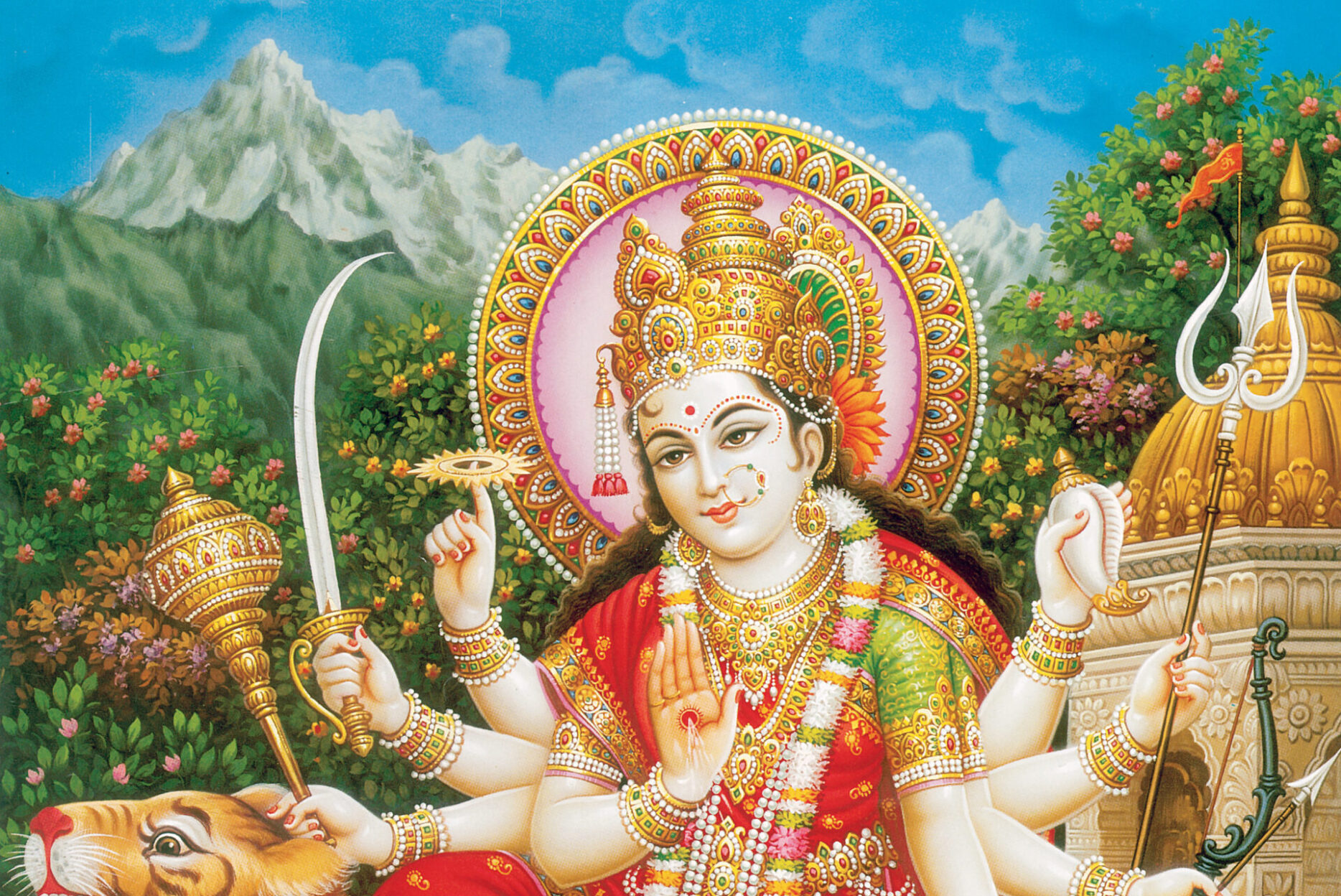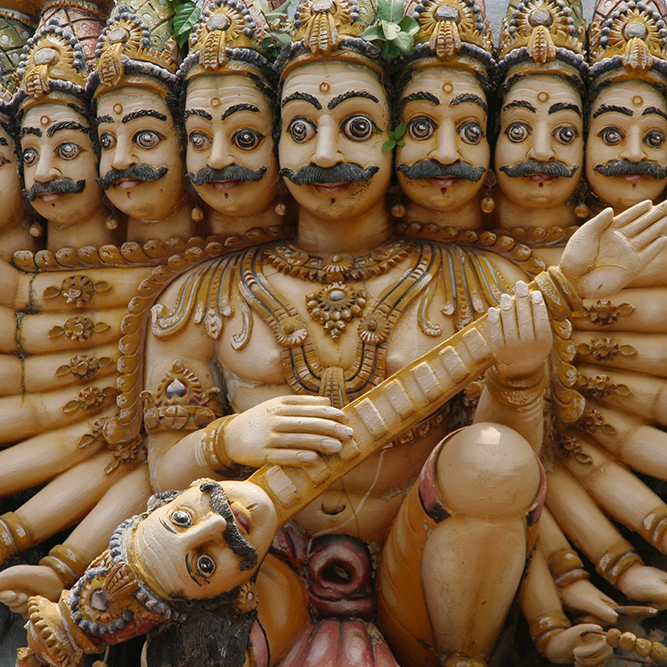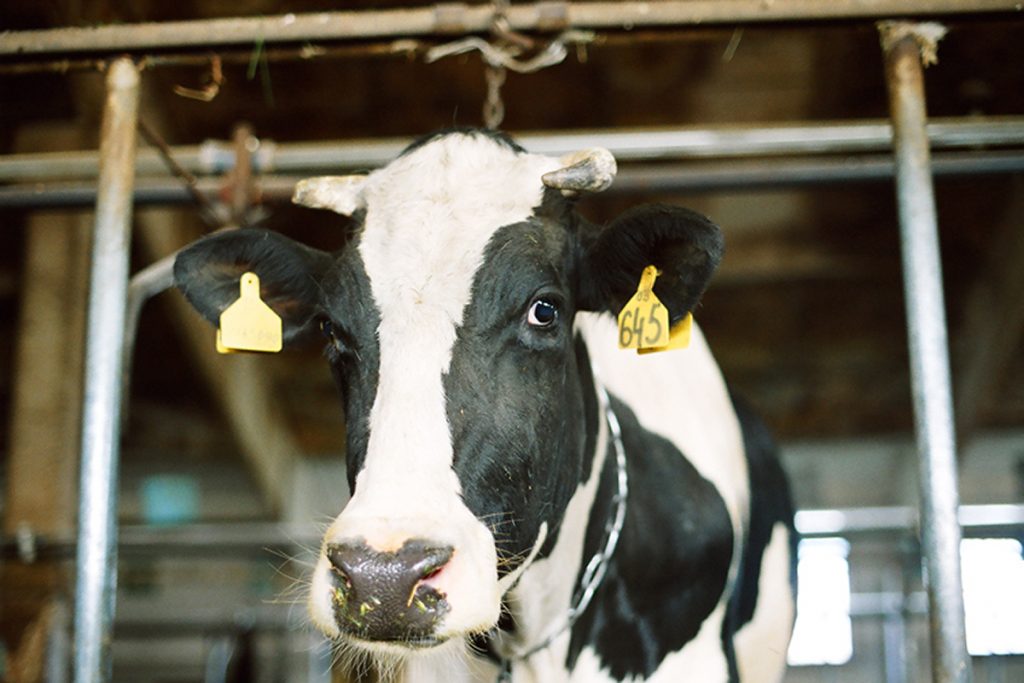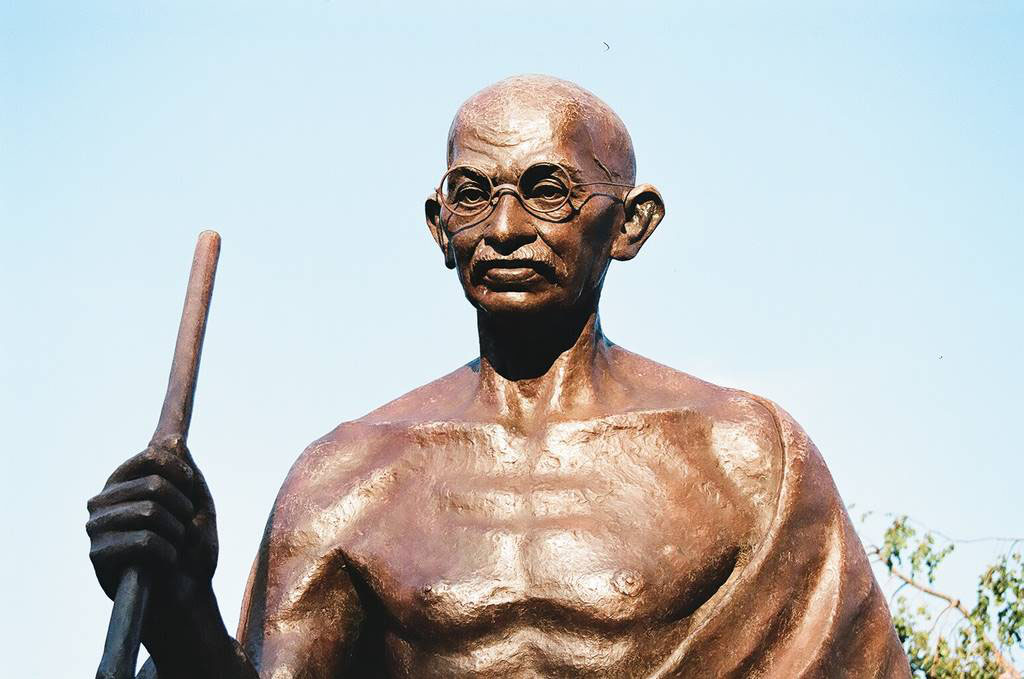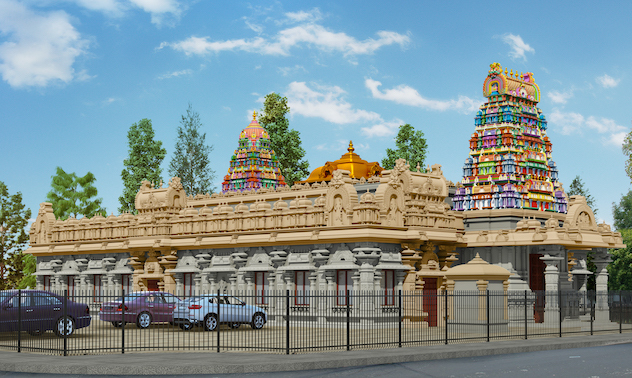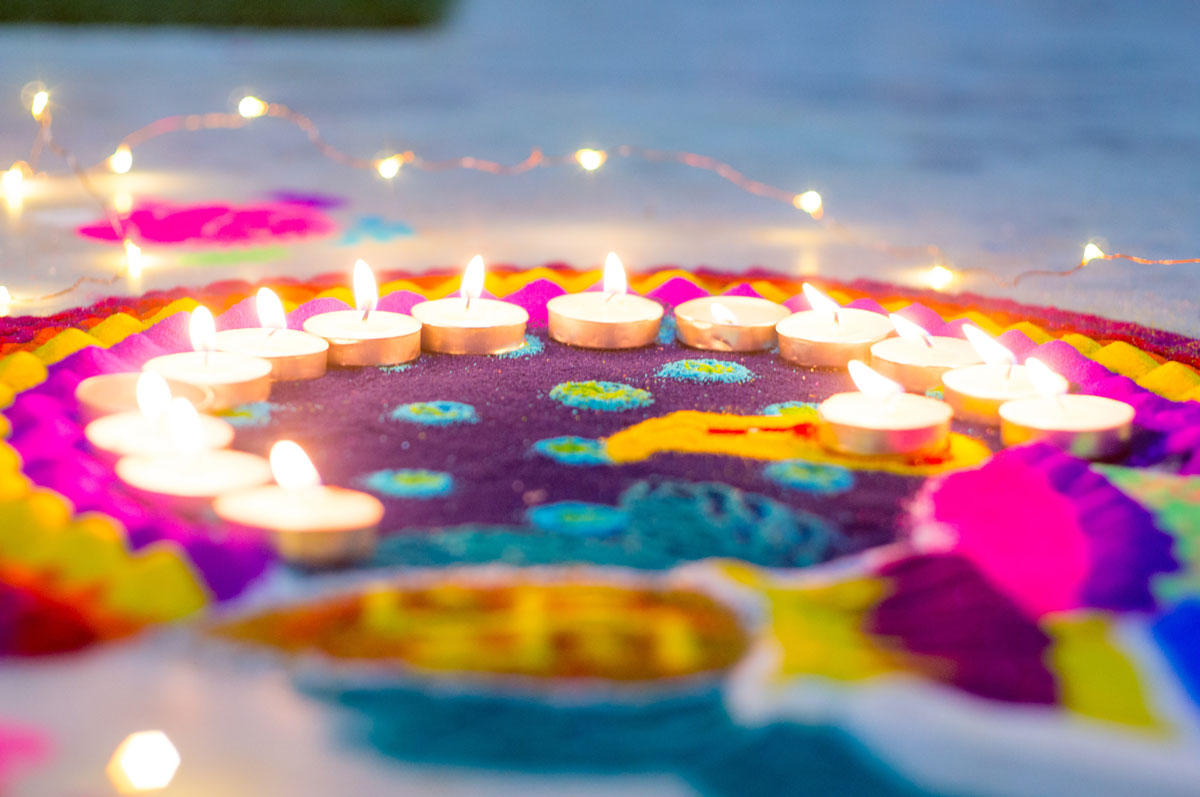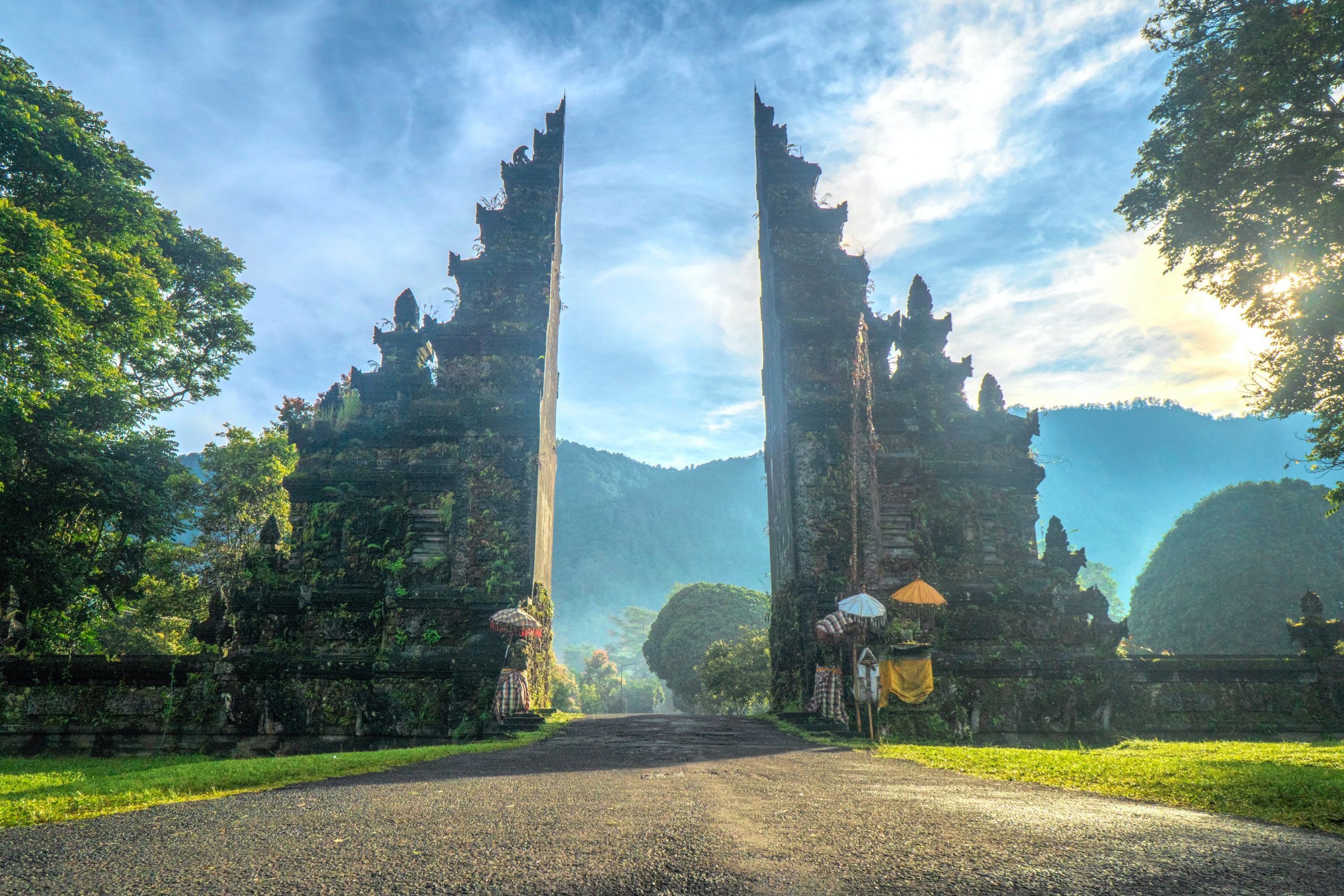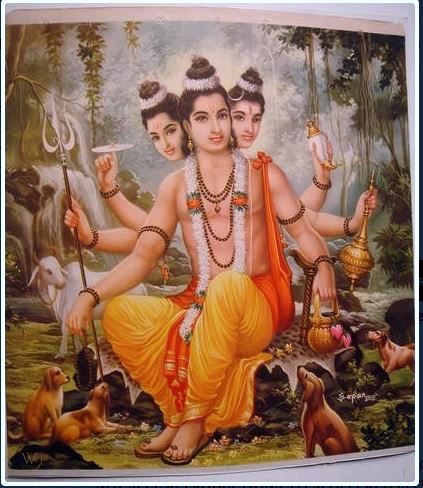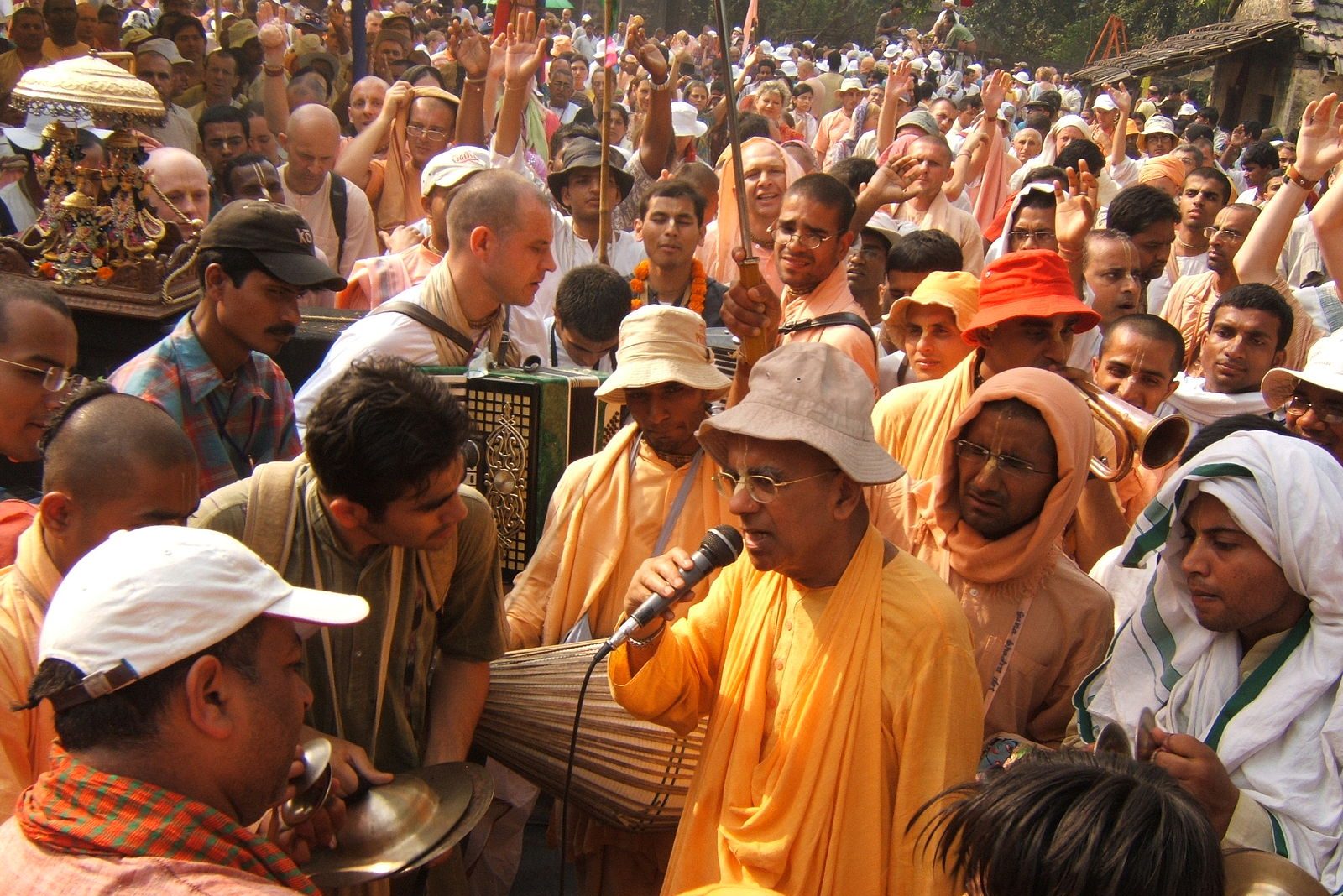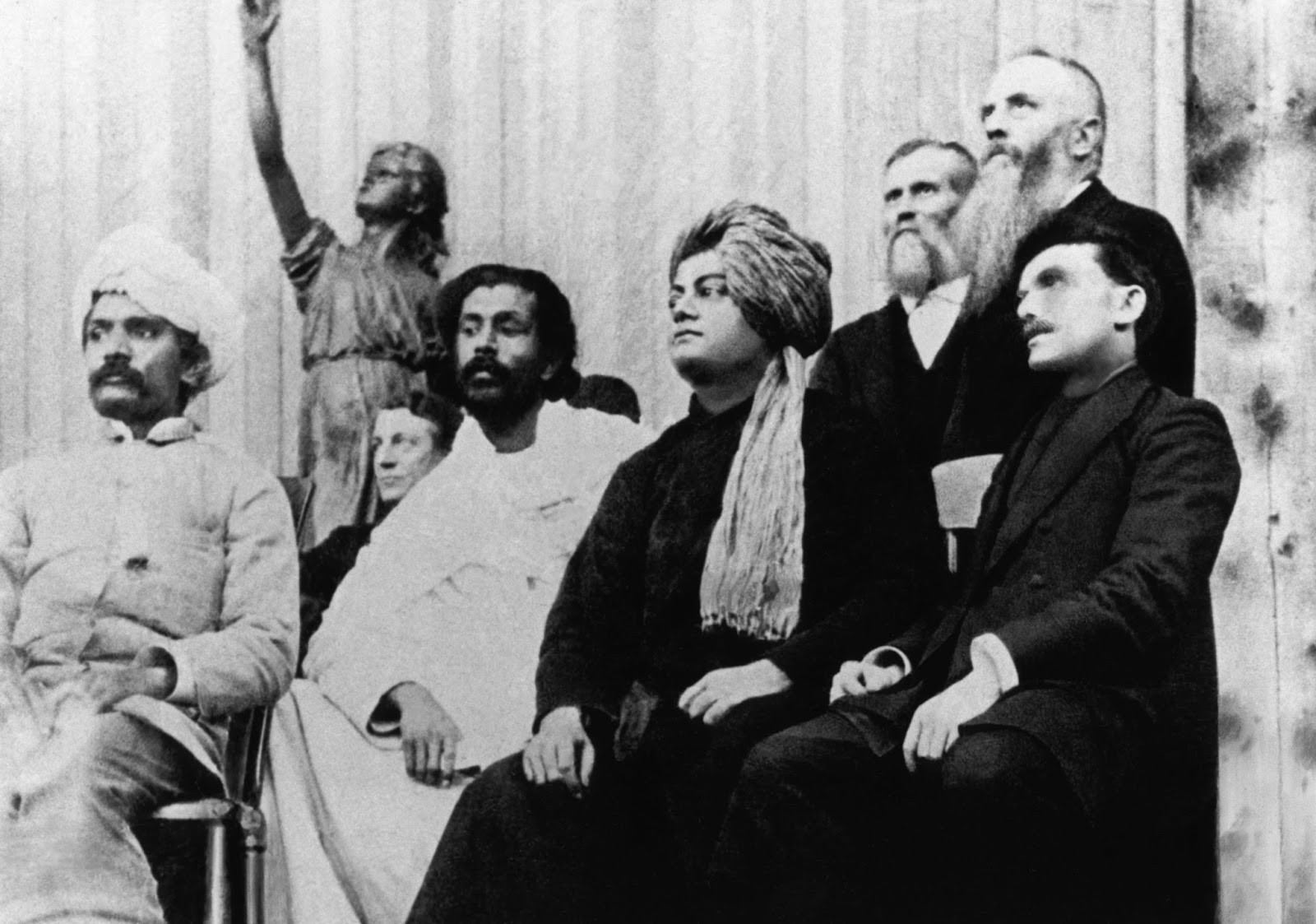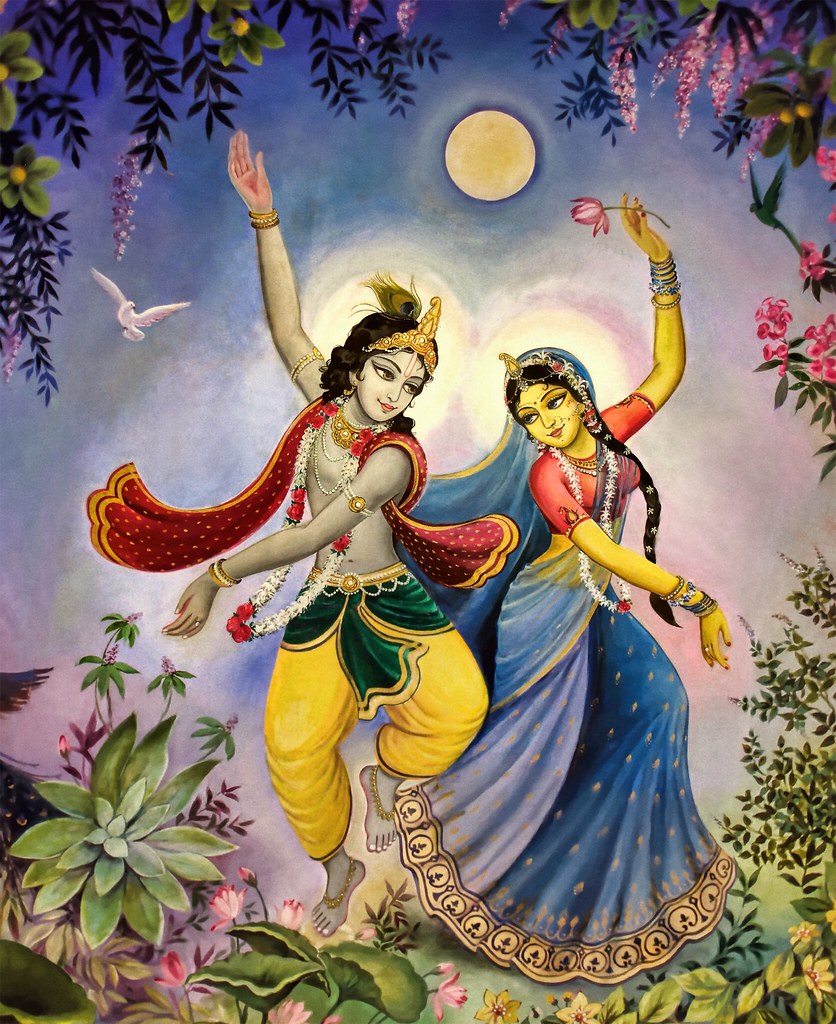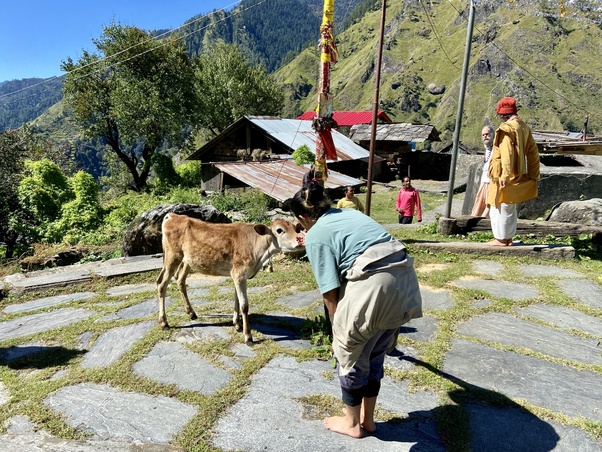
We stopped for the night at the village — more of a roadside pilgrims’ base camp, really — of Gangnani. Gangnani has hot springs in which we bathed, which felt wonderful in the cold mountain air.
One of my friends in particular has spent a lot of time in Gangnani, practically as a second home, and knows its secrets which the vast majority of passers-through never realize are there. For instance he knows that a great saint frequents Gangnani. This saint is a true wandering avadhut who lives in the Himalayan wilderness, not in human villages. He roams the mountain forests. However he does sometimes spend the night in a village temple while passing through. My Gangnani friend made inquiries and learned that “the Baba”, as the locals call him, was rumored to have been sighted by goatherds on the mountain that very day, and an imminent visit by him was considered highly possible, though no one could ever say for sure.
Exploring the Gangnani area, I climbed partway up a small mountain waterfall.
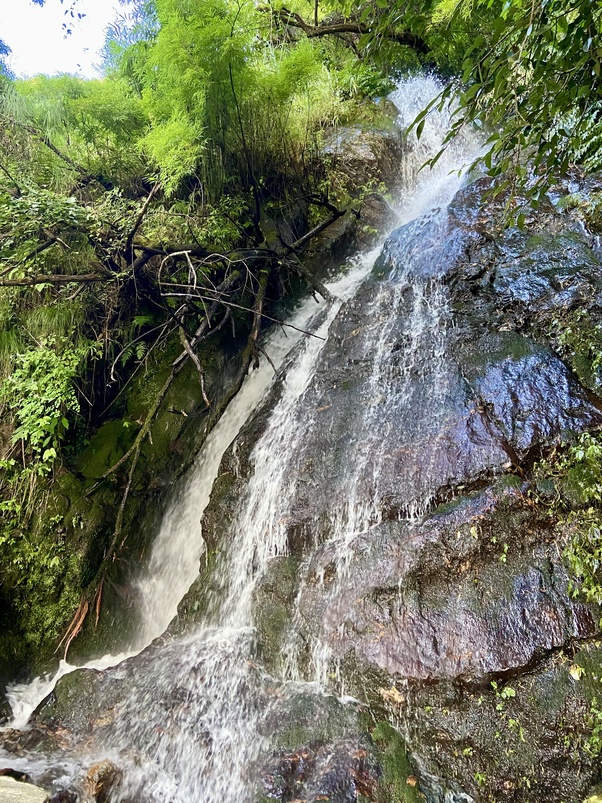
We also visited the tiny local temple:
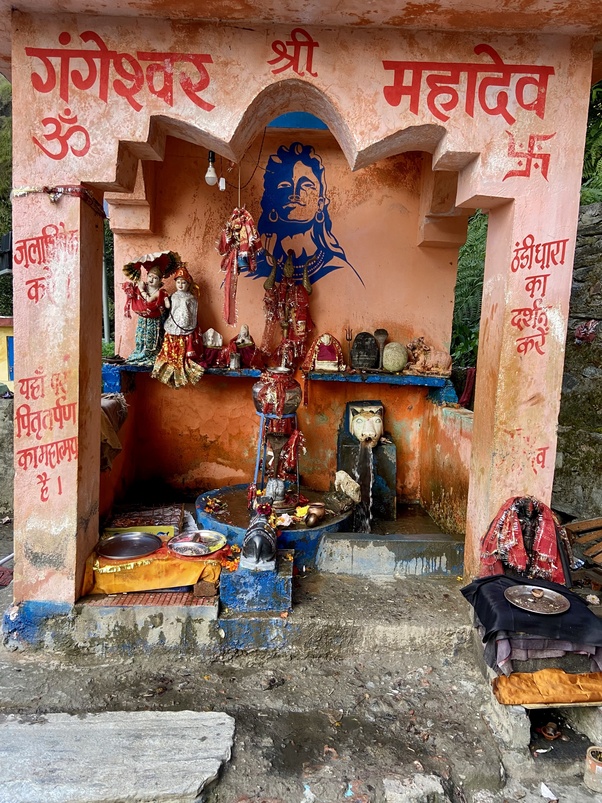
Up above the hot springs is a cave where Maharishi Parashara once dwelt and did Tapasya.
The local villager friends of our Gangnani-friend treated us to a delicious dinner of true Garhwali cuisine, made from vegetables that they grew themselves in their village. Their local specialty was their giant cucumbers.
Meeting the Nameless Sage in a cave
After dinner, late at night, we were about to go to bed when a village boy came and whispered to us: the Baba had appeared in the cave of Parashara! We hastened there to meet him. It was just us and him. Few others knew he had come, since he did not come by the road, but down from the mountain. He was an old, true wandering sadhu radiating the aura of enlightenment. A Naga baba of the Juna Akhara order of sannyasins, his name was Om Giri Baba.
But a note on that name: I happen to know, from interviewing other Naga babas in prior years, that “Giri Baba” is affixed to the names of all Juna Akhara initiates. And “Om” isn’t really a name, but simply the primordial syllable. So for him to go by the name “Om Giri Baba” is really the cultural equivalent of being nameless.
We sat with the Nameless Sage in the cave late into the night. He talked to us about many things, most of which I will not share here as it was meant only for us. But I will mention that one of my friends, always especially enthusiastic about the whole Naga thing, asked the Baba about Nagas. Among other things, he said (I am roughly translating from his Hindi, and from memory): “A little over twenty kilometers into the hills here, not north up the Ganga but east, is a hidden Naga lake. A Maninag (jewelled Naga) lives in that lake, with a glowing gem in its hood. Villagers go there at night to get the darshan of the Nagamani under the water. I myself have seen it.” He made it clear that this lake could not be approached by any road or trail, but required over a twenty-kilometer hike through the wild forested mountains.
Finally we left the Baba alone in the cave, as he mentioned he planned to start his sadhana at 2am and we thought he may wish for a bit of rest first. We went and slept in the ashram.
In the morning, the Baba was already gone. The moon was picturesquely visible over the western mountains as they caught the dawn’s light over the eastern ridge.
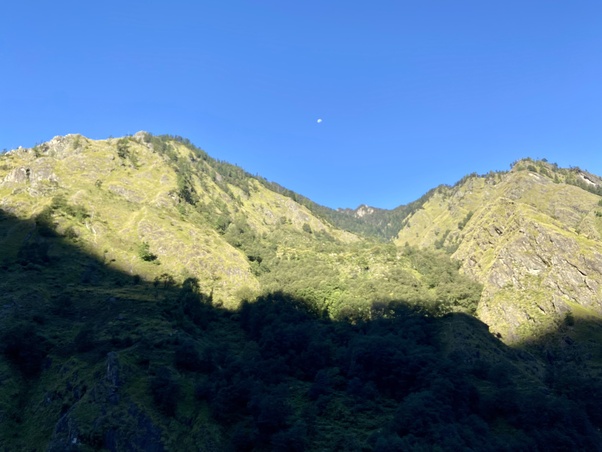
Another village where Nagas are venerated
Our Gangnani friend led us on a further local adventure. Behind the roadside ashram around the hot springs was a hidden foot trail leading up the mountain to a village of Naga worshippers. One would never even realize that trail was there, or that it led anywhere, without being shown it by a local. It was just made of rocks and pebbles, switchbacking up the steep, overgrown mountainside, and it began in an out-of-the way spot, sheltered from view. The steep hike up to the hidden village took a little under two hours.
On our way up the trail, a couple of local men passed us coming down, were surprised to see us, and asked us where we were going, since very few outsiders go up that trail; they clearly were not used to seeing people like us.
It’s truly a tiny rural Himalayan village up there. Only 149 people live up there, and this village is spread out across a width of 14 kilometers of mountainside, each family house with its own little crop terraces and goat-grazing slopes just below the thick woods. There is a cluster of houses close together in one area, and then separate herdsmen’s huts spread out.
They have a few cows too (including one very cute little calf), but mostly goats. They live a very peaceful existence, with few modern conveniences, utterly different from city life. They warned us that many landslides up there are started by goats, and to watch out. Some of the houses have electricity now, a very recent change, others still don’t (including all of the spread-out herdsmen’s huts). None of them have running water. They just draw buckets from mountain streams. There is no road, and no vehicle other than a donkey has ever come near the place.

One man was very excited and proud to show us a huge cucumber he had just harvested (like the one we ate last night). He rinsed it in the stream and then took it down the mountain to serve it to guests at the hot springs for some rupees.
The village was full of dozens of lizards, all over the place, on rocks in the sun. They were very cute, curious, and a little shy. They were fairly small. Our local friend said he had seen huge ones before.
The villagers on that mountain dedicate their veneration primarily to two beings: a Naga who lives up there — not Kaliya Nagaraja (read more), but a more minor local Naga — and a great deodar cedar tree. They do also revere Shiva and an obscure local Devi, but far secondarily. The Naga and the cedar tree are their predominant deities.
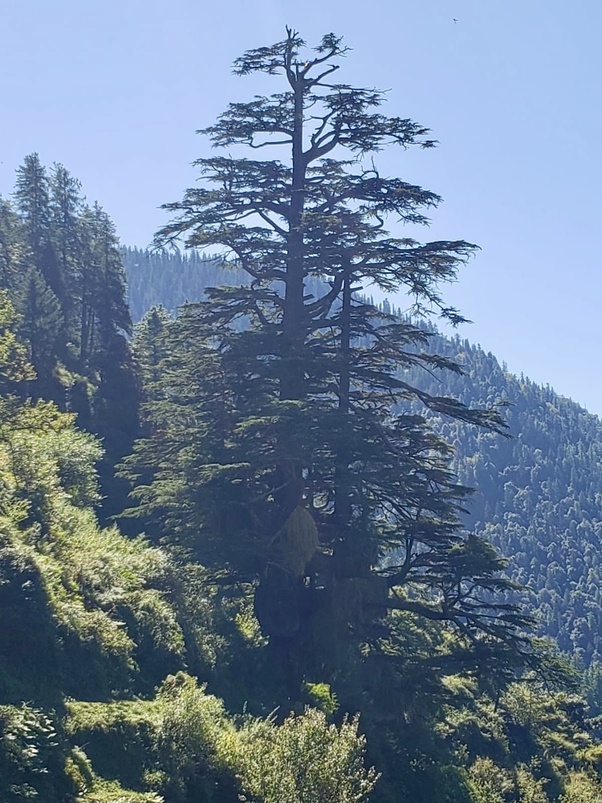
The deodar (a contraction of the Sanskrit Devadaru) cedar tree is a truly magnificent being. The villagers told us it is 450 years old, and looking at this massive tree close up, I easily believe it.
The villagers had hung bundles of cut grass in the tree to dry. This tree directly aids and benefits the villagers physically and spiritually, and they love and care for it in return. We sat tucked inside hollows in the tree’s trunk and meditated there for some time.
Many of these village people believe that they themselves were Nagas recently and now have been born as humans. Their one village temple is a Naga temple. We talked with various villagers about Nagas. They all said the Nagas live in the streams and forests, not in the temple; the temple is just where it has been arranged for humans to venerate them, and the Nagas will come when they wish. They said that they have a good relationship with the Nagas, who bring them good fortune, do not harm them, and increase the harmony and peace of the general area. They seek the Nagas’ permission before any new construction, which may otherwise risk angering them. They said the Nagas can also cure certain diseases — not just human diseases, but also in their goats, and plant blights. They can also impart magical spells and teach the knowledge of hidden tantras.
We went and performed our own Naga Puja in the serene mountain stream. This was a delicate operation, with no established temple protocols in place as safeguards. We approached the Naga with respect, open hearts, clarity of mind and awareness, and without greed. Nagas are pleased by immaculate cleanliness, so we were very neat and tidy with our offerings to them. I first used water to scrub all bird droppings off of the flat-topped natural stone we used as an altar.
First, I evoked Manasa and Kaliya as the regional Naga rulers, to keep the Nagas lawful. And I evoked the protective Naga Lords in the eight directions. Starting from east and going clockwise, I evoked the Naga Lords Ananta, Vasuki, Shankhapala, Kulika, Takshaka, Mahapadma, Karkotaka, and Padma. We mentally expressed to the Nagas that we come to them with loving hearts, that we aspired to treat them with loving kindness and compassion, that we wanted to get along with them, and expressed our wishes for their fullest wellbeing.
Nagas have known a lot of hostility from humans over the ages, up to and including genocide — for which Hindus, Jains, and Buddhists still make annual apologies and reparations — so it’s important to make one’s intentions known, not in spoken words, which may be lies, but by projecting out our thoughts and feelings, which Nagas can read and trust.
We chanted the Sarpa Mantras from Yajur Veda, Maitrayani Sanhita 2.7.15, and I chanted many other special Naga Mantras. We offered balls of cardamom, nutmeg, cloves, sugar, honey, and sesame — all traditional Naga offering ingredients. We also offered walnuts, two fresh local apples, and some special fresh green shoots.
Some of the villagers came and watched our Naga Puja with great interest. During our Puja, an old woman came down from the mountain above us, not from any visible house or structure. She seemed to just appear atop a ledge overlooking us. One-eyed, gnarled with age, she held a twisting staff and radiated matriarchal power and dignity. She fixed her one eye upon us and stood there watching. We continued our Puja. After it was done I turned to look at her again, but she was gone.
Then it was the villagers’ turn. They called us to their temple and showed us their own Naga Puja, very similar to the one at Sem Mukhem.
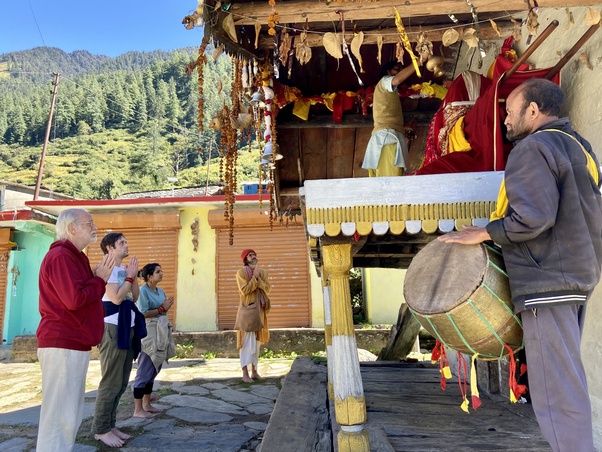
They also venerated a trident, a sacred wooden post, their village Mother deity, Lord Shiva, and a sacred Naga drum (this ceremonial drum was also used in the Naga Puja at Sem Mukhem).
A note: Though I undertook this trip in the autumn of 2022, information on the temples and places visited presented at the links in this article are current as of mid-2025. Logistical details of getting between places can change quickly, however, and individuals should verify the latest information from other sources.
All photos in this article © Devala Rees.


